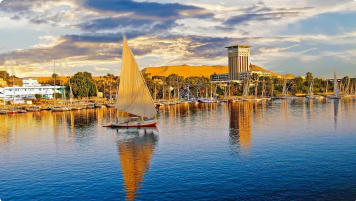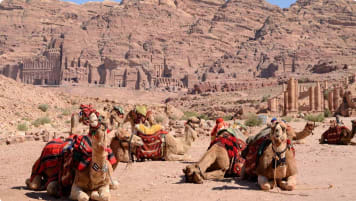Discover Cairo: The City Victorious and Mother of the World
Article for mature and senior travellers, couples and solo travellers provides expertise about the city of Cairo, the former historic capital of Egypt. Learn about the history and relationship to the pyramids and to Alexandria and more before joining a small group tour to Egypt.
11 Jan 21 · 12 mins read
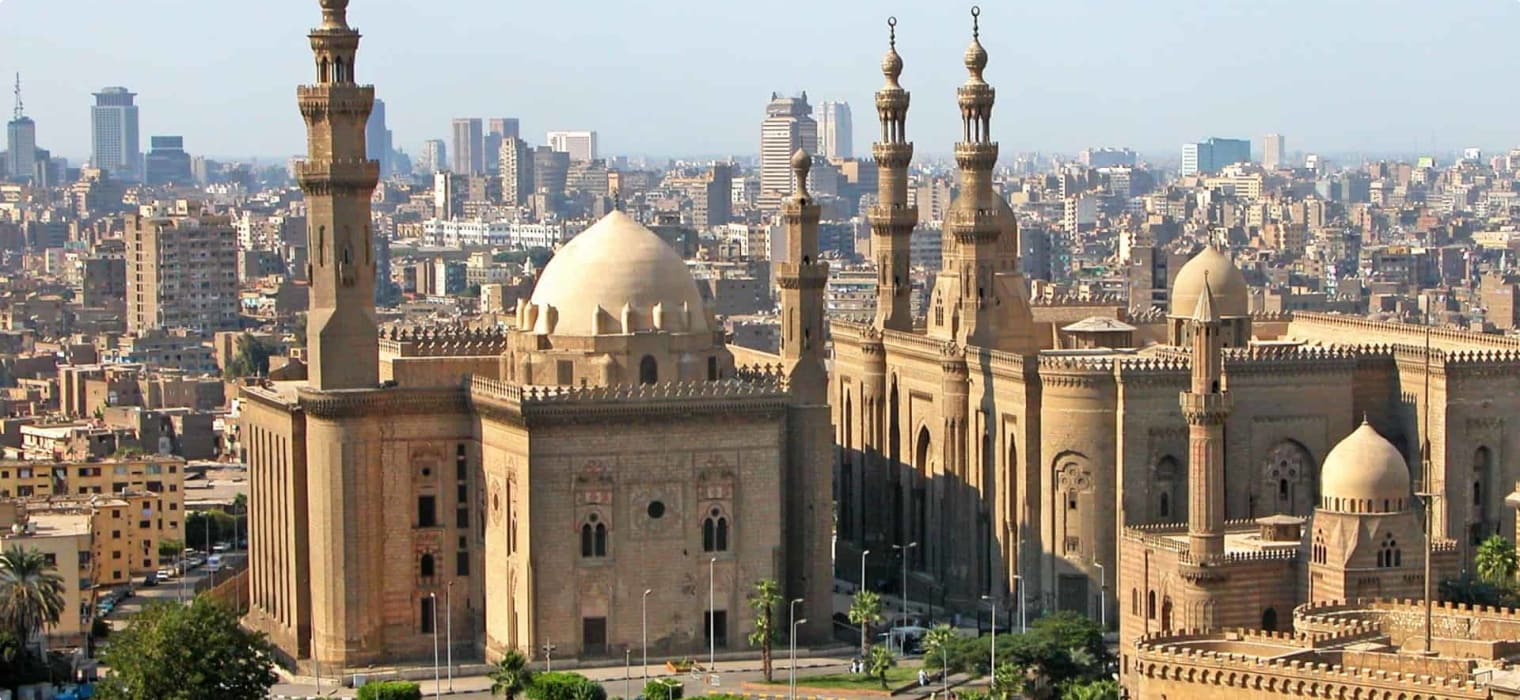
Cairo: The City Victorious
Magically chaotic and full of contrasts, Cairo is Egypt‘s largest city and its capital. With a population of 20 million (the second largest city in Africa), it is a bustling and vibrant blend of old and new worlds, teeming with people and stories. Cairenes refer to the city in Arabic as ‘um al-duniya’ or ‘mother of the world’, making reference to its significance and the role that Egypt has played as the cradle of civilisation. Modern day Cairo is often criticised for being hot, noisy and overwhelming but beneath the madness you see at first glance, there lies a thriving energy and complex history. While Egypt’s capital moved multiple times throughout millennia, Cairo was the country’s seat of power since 969 AD until around 2021 (it moved to again to the new capital NAC) and all throughout the city you will find markers of this long history.

In this article for mature and senior travellers interested in small group tours focussed on ancient history, we will discover the history of Cairo, its journey to the being known as the City Victorious, the introduction of Islam and how Cairo has changed today. This article is inspired in part by Justin Marozzi’s Islamic Empires (Penguin Books 2019) and articles linked throughout. It is written as a backgrounder for those interested in our escorted tours of Egypt, which focuses on the history and culture of Ancient Egypt. On this tour, travellers will explore Cairo including the Giza Pyramids and the impressive Egyptian Museum before making their way from Cairo to Luxor down the Nile, visiting the Luxor Temple and the Philae Temple off Aswan. The tour ends with a visit to Lake Nasser before returning Cairo via Alexandria.
If you are interested in learning more about this fascinating country, you can find more articles about Egypt here.
Memphis, Fustat and the Founding of Cairo
Cairo has its roots in the ancient city of Memphis. Today, Memphis in Egypt lies mainly in ruins on the west bank of the Nile River delta, around 24 km from modern-day Cairo. But 5,000 years ago Memphis was a bustling hub of activity, the capital of Ancient Egypt during the Old Kingdom. It was while Memphis was the capital that the Pyramids of Giza were built (somewhere between between 2589 and 2504 BC).
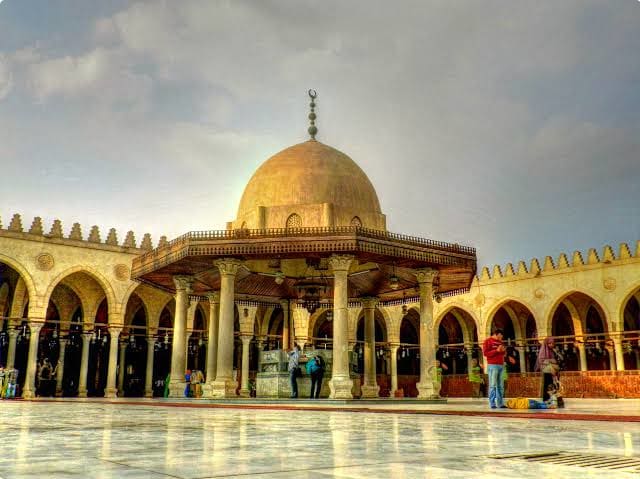
Around 2,000 years ago, the Romans occupied a town at the port on On (modern-day Heliopolis), which they named Babylon and is now part of modern-day Cairo. However, the foundations from which Cairo would be built was the town of Fustat, established to the south of Babylon in 642 AD by Amr Ibn Al As, the Arab general and administrator who brought Islam to Egypt. Fustat soon became an incredibly wealthy port city, in part due to Egypt’s rich soil and the imposition of taxes on Nile traffic. Tenth-century texts describe it as the richest city in the world and spoke admiringly of the city’s verdant parks, thriving markets and blooming gardens. Muqaddasi, an Arab geographer, described it as more magnificent than Baghdad, writing that it was the most impressive city in all of Islam. Today, few traces of the ancient city remain though there are some reminders of its royal suburbs in the form of the mosques of Amr Ibn Al As (founded 642) and Ahmad Ibn Tulun (founded 878).
However, the fate of Fustat would change in 969 when the Fatimids marched from modern-day Tunisia and invaded Egypt. Rather than occupy Futstat, the Fatimids insisted on building a new royal city that would be home to both the rijal al sayf (men of the sword or the military) and the riyal al qalam (the men of the pen or the administration). This was how the city of Al Qahira was born. Construction of the fortified city took four years and during this time, Fustat remained the administrative centre. The new city was initially named Al-Mansuriyyah but was given its present name Al-Qahira in 974 to celebrate the arrival of the Fatimid Calpih Al-Muizz. Legend has it that when the building of the city began the planet Mars was in ascendant and Al-Qahira literally translates to ‘the place or camp of Mars’. However, it also means ‘the Vanquisher’ or ‘the Victorious’, which was likely a reference to the much awaited Caliph. The Caliph made the city the capital of a dynasty that would rule for two centuries, remembered for its religious tolerance and economic reform.
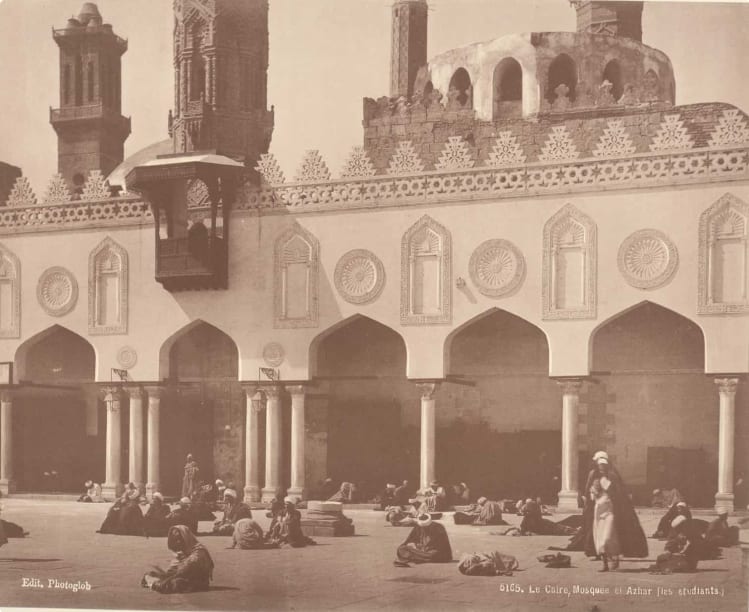
The building of the great Al Azhar Mosque and university in 972 had great significance for the new capital as the first mosque and theological college built in Fatimid Cairo. It became one of the city’s finest buildings and centre of Islamic study in the wider Muslim world.
The Decline of Fatimid Rule
While Fustat and Cairo shared the status of capital for the first centuries of Fatimid rule, in 1168, under leadership of Vizier Shawar, Fustat was set fire to in order to prevent Cairo being captured by the Crusaders. After this, Egypt’s capital was permanently moved to Cairo. That same year, Saladin was appointed the new vizier of Egypt by the Fatamids but two years later, after driving off the Crusaders, Saladin seized power from the Fatamids and established the Ayyubid dynasty. He became the first Sultan of Egypt and aligned the country with the Abbasid caliphate in Baghdad. The Ayyubids would rule over Egypt and Syria for the following century.
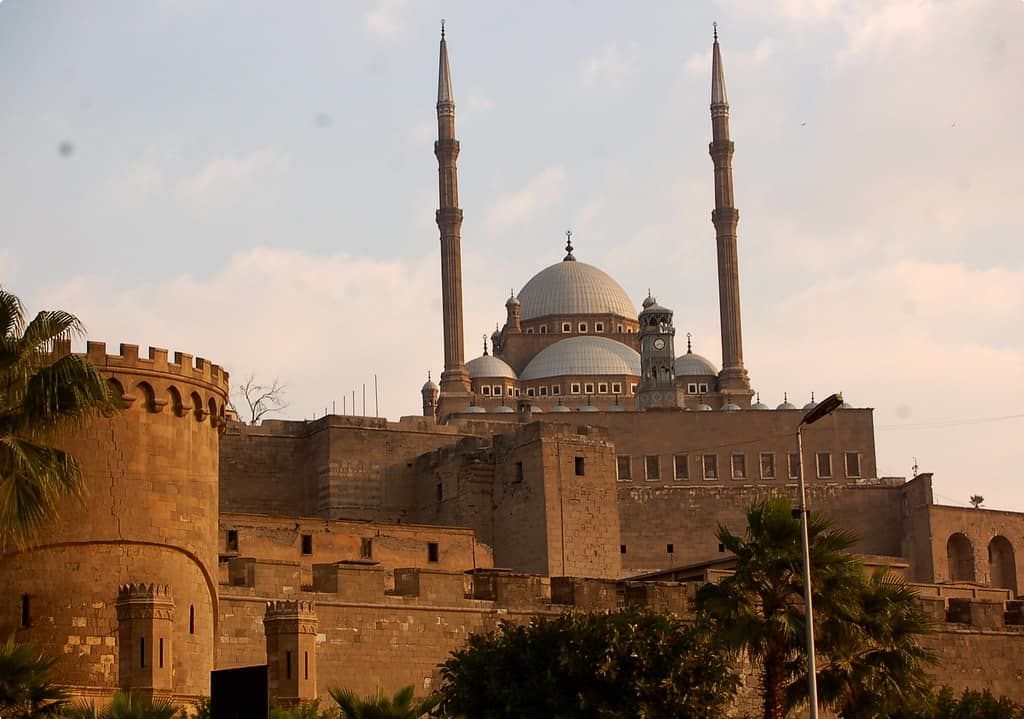
During his reign, Saladin, who had witnessed Cairo’s vulnerability while keeping the Crusaders at bay, built the famous Cairo Citadel. The citadel would become the greatest fortress in the Middle East and remain home to Egypt’s leaders and the seat of government for another 700 years. He also further extended the city’s walls, which can still be seen today.
In 1250, a group of slave soldiers known as the Mamluks attempted to seize control of Egypt. By 1260, Baybars I had become the first Mamluk Sultan, choosing Cairo as the capital of the Mamluk empire. The Mamluks ruled Egypt and much of the Levant for three and a half centuries. During this time, Cairo became increasingly prosperous with a flourishing spice trade and recognised as a centre of Islamic scholarship. Within a century, Cairo had a population of almost half a million, making it the largest city west of China.
1348 marked the beginning of the majestic city’s decline. The bubonic plague decimated Cairo. Texts from the time suggest that at the height of the plague, 20,000 people were dying a day. As well as this, the spice trade was rerouted by Portuguese explorer, Vasco de Gama, reducing Cairo’s economic preeminence. By 1517, the city was well and truly weakened and thus seized by the Ottomans.
Ottoman Rule: Cairo the Provincial Capital
Under the Ottomans, it seemed that Cairo’s heyday was over. Ruling from the Ottoman capital of Constantinople, Sultan Selim I reduced Egypt to a province and Cairo a provincial capital. While the city remained something of an economic centre, facilitating the transport of coffee and textiles, for much of this period its significance as a city of consequence and import was greatly diminished. However, the city itself did expand its territory from around the Citadel and became the second-largest in the empire after Constantinople, although by the time Napoleon arrived in Cairo in 1798, the population of the city was less than 300,000.
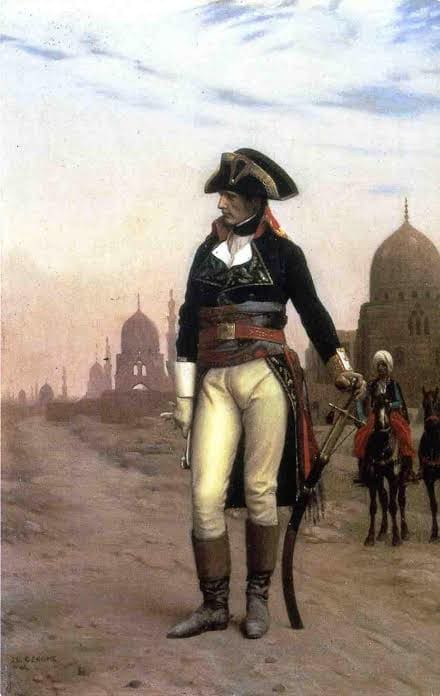
Napoleon’s occupation of Egypt did not last and Cairo was besieged by a British and Ottoman force (with an Albanian contingent) desperate to recapture the country from the French. The French surrendered in June 1801 and the British vacated soon after. This left behind the Ottomans, the Albanians and the Mamluks all wanting control of Egypt. Eventually, an Albanian name Muhammad Ali ascended to the role of commander and became viceroy of Egypt in 1805.
Cairo in the Modern Era
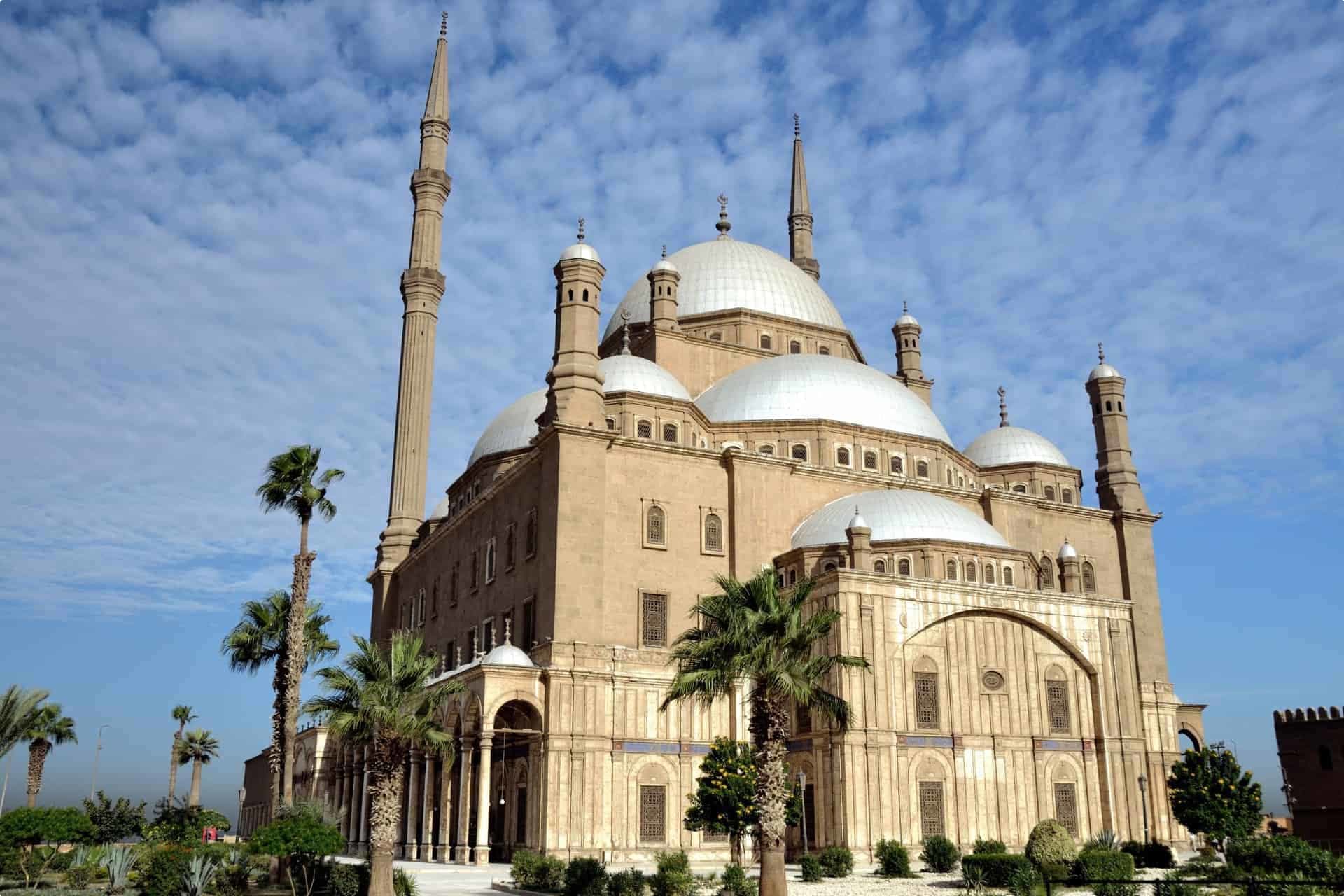
Muhammad Ali is considered to be the founder of the modern Egyptian state, introducing sweeping social and economic reforms during his time in power. He restructured the country’s administrative system, improved irrigation systems and oversaw the introduction of cotton, a commodity which saw Alexandria become an increasingly important financial centre for Egypt. However, it was under the role of Muhammad Ali’s grandson, Ishmail, that the city of Cairo would be transformed.
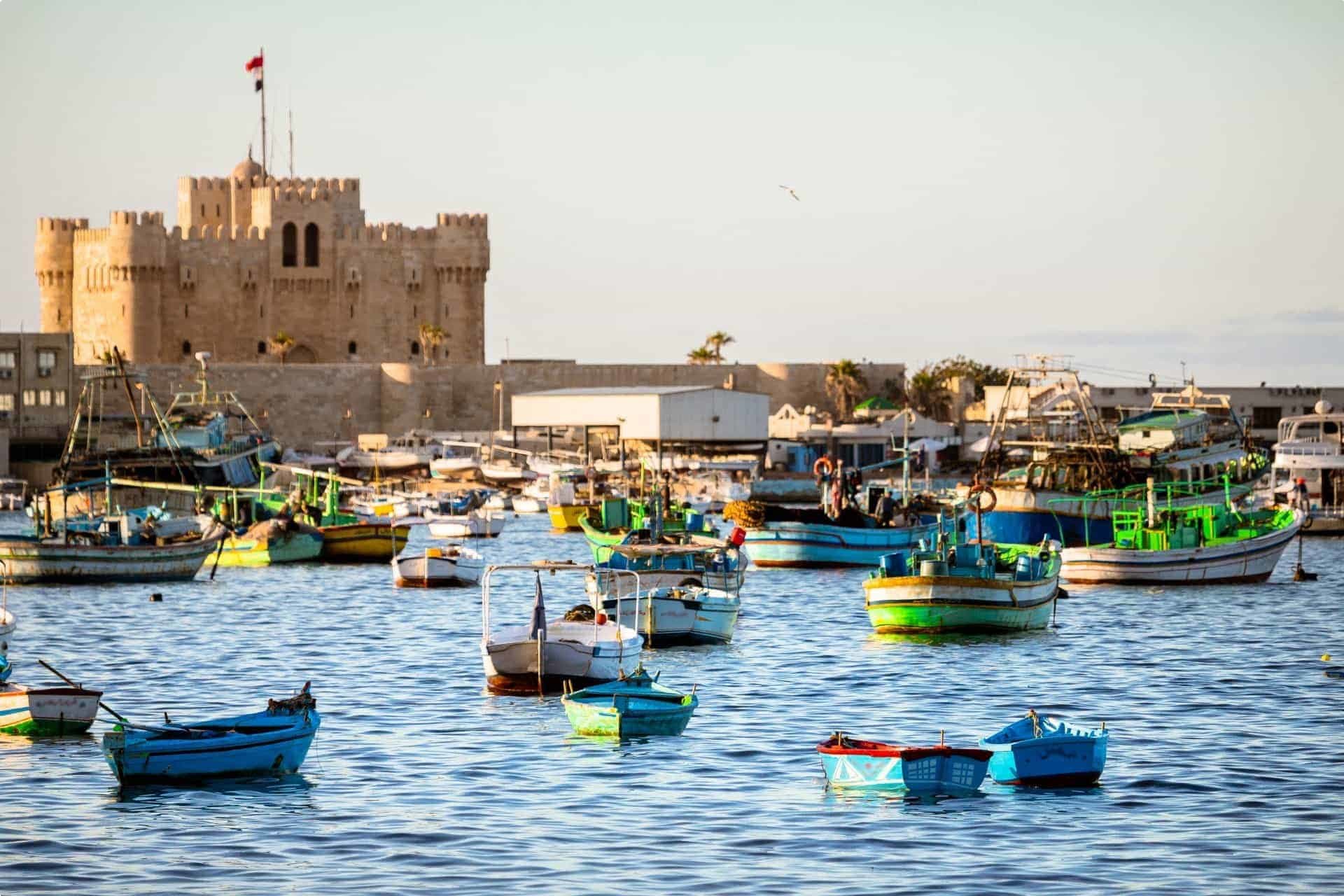
Ishmail Pasha ruled from 1863 to 1879 and in his sixteen years it is said he did as much for Cairo as the Fatimids. Inspired by Paris, Ishmail wanted to create a European-style city of tree-lined avenues and town squares. He ordered the construction of his dream city to the west of the medieval core. Today these are the districts of Al-Azbakiyyah, Abdin and Ismailiyyah in modern-day Cairo. Ishmail also built a theatre and an opera house, modernising the city with gas and the establishment of a public works ministry. The effect of Ishmail’s work was the creation of two Cairos: European Cairo and Egyptian Cairo, almost like sister cities sitting side by side.
Ishmail’s ambitious plans for Cairo left Egypt in over 100 million pounds of debt and such an economic crisis led to heightened French and British intervention in the country. France and Britain began to control Ishmail’s treasury, railways and ports, eroding Egypt’s sovereignty. In response, a nationalist movement formed led by Ahmad Urabi who became increasingly powerful throughout the course of 1881. The movement convinced the new viceroy of Egypt, Tawfiq, to install his government with one that reflected the objectives of the nationalism movement and Urabi became Minister of War. The establishment of an independent and defiant government in Egypt worried both France and England who were interested in maintaining their access to the Suez Canal and this led to the Anglo-Egyptian war and the British conquest of Egypt in 1882. On 14 September 1992, British military divisions marched through Cairo and Urabi and his associates were taken prisoner and exiled while Tawfiq was restored to power.
Once an independent country, Egypt was now in the hands of the British and even when Egypt gained independence in 1922, British forces remained in the country until 1956. During this time, Cairo continued to expand with the population increasing from 347, 000 in 1882 to 1.3 million in 1937.
1952: The Egyptian Revolution and Cairo Fire
In January, 1952 soldiers of the British occupation killed up to 50 Egyptian policeman in Ismaliya, on the bank of the Suez Canal. In Cairo, a wave of riots broke out which led to a burst of violence, resulting in the burning of nearly 700 shops, movie theaters, casinos and hotels in Downtown Cairo. The beautiful Cairo Opera House, built by Ishmail, was destroyed.
The destruction of Cairo and the instability felt throughout the city was seen as proof of the Egyptian government’s lack of control over the country. Tensions arose between the government and King Farouk and the resultant domestic instability for the next six months paved the way for the success of the Free Officers coup.
On 23 July 1952, the Free Officers Movement commenced the Egyptian Revolution. Led by Mohammed Naguib and Gamal Abdel Nasser, the Free Officers Movement was seeking to overthrow King Farouk, end British occupation and establish a republic. The Egyptian Republic was established in 1852 and adopted a nationalist and anti-imperialist agenda.
Under the presidency of Naguib then Nasser, Cairo’s population steadily grew. By 1970, the city was suffering from overpopulation, pollution and traffic congestion and the government began building new suburbs further out in the desert and gated communities for the upper classes. By the beginning of the 21st century, Cairo’s metropolitan population was more than 17 million and the greater Cairo area features smaller satellite cities.

Cairo, Capital No Longer?
As something of a mega-city, Cairo faces continual problems of overcrowding and congestion. In March 2015, it was announced that the government had plans to built a new yet-unnamed city to serve as Egypt’s capital. In July 2018, Egyptian President Abdel Fatah al-Sisi laid the first stone of what will become the country’s new capital. Currently referred to as the New Administrative Capital or NAC, the area covers 714 square kilometres (roughly the size of Singapore) and will house Egypt’s government and financial district. Other countries have done this before. Brazil, for example, moved its capital in 1960 from the coastal city of Rio de Janeiro to Brasilia, a city planned from scratch and built at the top of Brazil’s highlands. Abuja, a planned city built in the 1980s, replaced Lagos as Nigeria’s capital in 1991.
The new city will house the presidency, Cabinet, parliament and ministries. Architects and planners have promised a public park eight times longer than Central Park, an airport, an opera house and 20 skyscrapers, including one that will be the highest in Africa at 344 m high.
The new city remains unfinished and the future of Cairo seems uncertain. Whatever may happen, it will always have its history and it bears the marks of the Greeks, Byzantines, Arabs, Mamluks, Turks, French and British who have wandered its streets and sought to control it. A true melting pot of cultures, religions and people, to walk through Cairo is to walk through an open-air museum, past the many mosques, minarets, mausoleums and museums that make it what it is today while reminding travellers of those who have come before.
What to do in Cairo
The Pyramids of Giza

The Pyramids of Giza are, rightfully, one of the seven ancient wonders of the world and an awe-inspiring, jaw-dropping testament to the might and magnitude of Ancient Egypt. Explore the four most famous sights on the Giza plateau: the Great Pyramid of Khufu, the Pyramid of Khafre, the Pyramid of Menkaure and the Sphinx and then wander through the surrounding smaller pyramids and temples and be transported back to the time the Pharoahs reigned. A site of great archaeological interest, it has been heavily excavated over the years.
Al-Azhar Mosque
Built in 970 AD as the heart of the newly created Fatimid Cairo, Al Azhar has been enlarged and updated over its 1050 years of existence, with minarets added in the 14th, 15th and 16th centuries. Today, you can appreciate its architectural medley and admire the central courtyard, which is the oldest part of the complex. The mosque also hosts the world’s second-oldest educational institution, which dates back to 988 AD.
The Egyptian Museum Of Antiquities
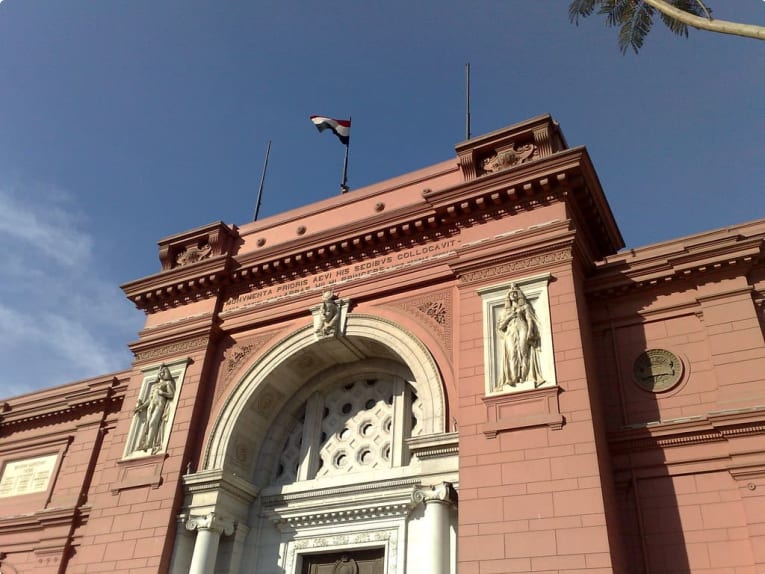
This museum in Cairo is home to the world’s most important collections of Egyptian antiquities and a treasure trove of artefacts. Admire the treasures of Tutankhamen and other pharaohs as well as mummies, jewellery, statues, utensils, tools and toys from the time of the Ancient Egyptians. There are more than 160,000 pieces of history housed here. One can also learn more about the Ancient Egyptian deities including Sobek, the lord of the crocodiles and creator of the Nile, the god Horus, the falcon-god, and the god Amun, creator of the universe.
The Hanging Church of the Virgin Mary
The Hanging Church, also known as St Virgin Mary’s Coptic Orthodox Church, is potentially the oldest and most important Coptic church in the world. Dating back the 3rd century, it was originally built on the top of the Roman Babylon fortress and has a roof shaped like Noah’s Ark.
These are just some of the amazing highlights of Egypt, a country of diverse landscapes and stirring secrets. With the stunning beaches of the Red Sea at Dahab and Sharm el-Sheikh, the fertile valleys that frame the Nile and the barren desert that stretches between, Egypt is sure to to capture your imagination. From the great Pharaohs and their ancient pyramids to the Fatimid dynasty and Ottoman emperors, there are plenty of reasons to visit Egypt. If this article has sparked your interest in Cairo, please take a look at our tours in Egypt.
We specialise in educational small group tours for seniors, typically groups between six to 12 people from Australia, New Zealand, USA, Canada and Britain. Our maximum number of people on a tour is 18 mature aged travellers. Typically, our clients begin travelling with us from their mid 50’s onward. But be prepared to meet fellow travellers in their 80s and beyond! Both couples and solo travellers are very welcome on our tours. We have some 150 tours and offer 300 scheduled departures on offer each year. Odyssey has been offering this style of adventure and educational programs since 1983.
Odyssey Traveller is committed to charitable activities that support the environment and cultural development of Australian and New Zealand communities.
Odyssey Traveller scholarship for Australia & New Zealand University students.
We are also pleased to announce that since 2012, Odyssey has been awarding $10,000 Equity & Merit Cash Scholarships each year. We award scholarships on the basis of academic performance and demonstrated financial need. We award at least one scholarship per year. We’re supported through our educational travel programs, and your participation helps Odyssey achieve its goals. Students can apply for the scholarship by clicking on this link to find out more details.
Join our loyalty program when you join an international small group tour.
Every International small group tour taken typically contributes to your membership level in our Loyalty Program for regular travellers. Membership of the alumni starts when you choose to take your first international small group tour with Odyssey Traveller, discounts in tour pricing for direct bookings accrue from your third tour with Odyssey Traveller. To see the discounts and benefits of being a Bronze, Silver, Gold, and Diamond alumni member with us, please see this page.
For more information on Odyssey Traveller and our educational small group tours, visit and explore our website, and remember to visit these pages in particular:
- Terms and conditions applicable for booking an Odyssey Traveller tour.
- FAQ’s about Odyssey Traveller
Alternatively, please call or send an email.
Articles about Egypt published by Odyssey Traveller.
- Uncovering Ancient Egypt: What we can learn from Egyptologists
- From Cairo to NAC: Egypt builds a new capital city
- Questions about Egypt: The Definitive Guide
- Egyptian Linen Treasures
- Discover Egypt with ten great books
- Cairo development site reveals ancient statue
- The time to visit Egypt is now
External articles to assist you on your visit to Egypt
Related Tours
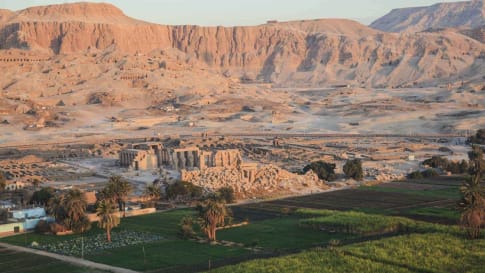
18 days
Nov, JanEgypt tour: escorted small group history & cultural tour of Egypt
Visiting Egypt
Our small-group program, designed for senior couples and solo travellers, offers a rich journey through Egypt's past and present. You'll explore modern marvels like the Aswan Dam and immerse yourself in pivotal sites such as Tahrir Square, both key to understanding Egypt’s enduring influence on civilization. This tour is proof that Egypt remains a vital crossroads of history and culture. We explore Egypt's fairy-tale natural beauty, its ancient history, and Imperial heritage, its World Heritage Sites, and world famous cities, all with some truly spectacular scenery along the way. For those seeking an even deeper experience, we also offer opportunities to extend your travels with our tours in Morocco, Jordan, or Tunisia before beginning your Egyptian adventure.
From A$12,950 AUD
View Tour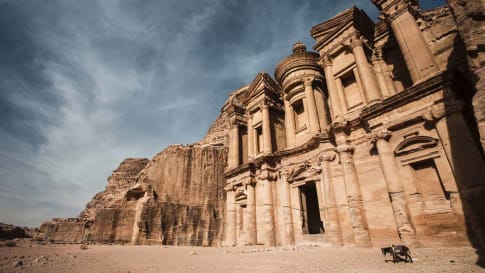
9 days
Jan, OctAncient History of Jordan | Escorted Small Group Tour
Visiting Jordan
Explore Jordan, visiting its capital city, Amman Jordan, the ancient Desert Castles, Petra and the Dead Sea on a small group package tour for mature and senior travellers travelling as a couple or Solo.
From A$6,750 AUD
View Tour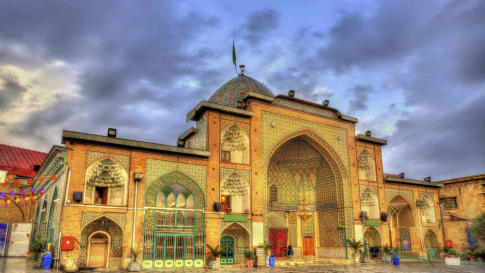
17 days
Sep, Nov, AprIran Culture and History Escorted Small Group Tour for seniors
Visiting Iran
Unlike its neighbours to the west and northwest, Iran had not adopted Christianity and it was the explosive spread of Islam and its ready adoption, without the Arabic language or customs, which helped unite the culture and greatly enrich Persian heritage. This small group tour program includes the great cities of Iran, historic sites, mosques, gardens, bazaars and teahouses for couples and solo travellers.
From A$11,825 AUD
View TourArticles
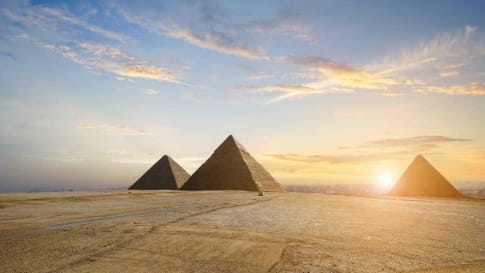
Cairo development site reveals ancient statue
History of Egypt revealed in ancient statue found in Cairo In March 2017 Egyptian and German archaeologists in Cairo discovered a large quartzite bust buried 2 m below ground level during construction of a new…

Discover Egypt with ten great books
Discover Egypt with ten great books Egypt captures the imagination and heart of us all. It is often our introduction to ancient history, and the mysteries of the pyramids and myths of pharaohs remain alive…
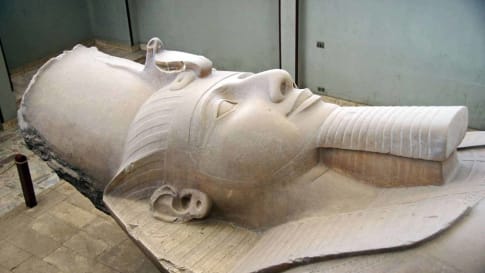
Egyptian linen treasures
Egyptian linen treasures Egypt has long held a place in the imagination of curious travellers. Many of us were introduced to the stories of pyramids, pharaohs and buried treasure as children, and since then, books…
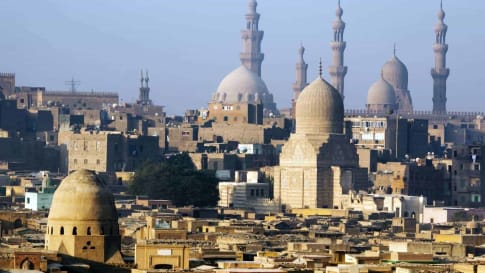
From Cairo to the NAC: Egypt Builds a New Capital City
From Cairo to the NAC: Egypt Builds a New Capital City On July 11, 2018 Egyptian President Abdel Fatah al-Sisi laid the first stone of what was to become Egypt’s new capital. The city is…

Nile River Cruise
The Nile River is the longest river in the world at 6695 kilometres long. Flowing from Uganda, through eleven countries, through to Egypt, it empties into the Mediterranean Sea.

Philae Temple
Egypt's Philae Temple is one of the most picturesque in the country and the complex is one of the most fascinating ancient sights in the world.

Questions about Egypt for senior travellers.
A small group tour to explore what remains of ancient Egypt. Visit Cairo, Luxor and the valley of the King and Queen plus Alexandria. A tour for senior and mature travellers.
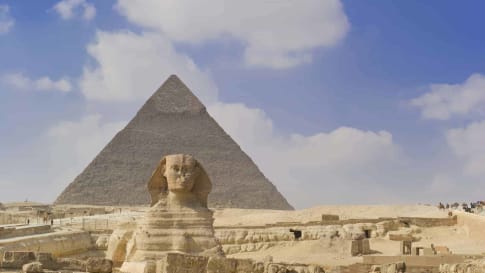
The Pyramids and the Sphinx
Egypt is home to one of the only remaining wonder of the Ancient World: The Great Pyramids of Egypt. The pyramids are monumental tombs for pharaohs from the 4th dynasty and relics of Egypt's Old Kingdom era, constructed around 4,500 years ago.
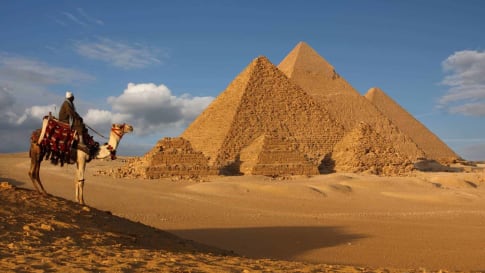
Uncovering Ancient Egypt: What we can learn from Egyptologists
In this article, we will discover some of the pioneers of Egyptology, the great archaeologists, excavators and linguists who have helped us explore, understand and protect Ancient Egypt and its heritage.

